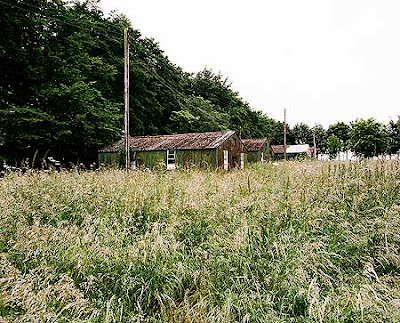Dr Ferris has persuaded me to give an account of a somewhat excessive day in my then youthful existence. At the end of the 1978 season the excavation of the eastern end of the long mound was incomplete. It was decided to place layers of plastic sheeting over the excavated surface, backfill the cutting and re-turf the area with a view to reopening the cutting following year.
At the beginning of the 1979 season the spoil that had been used to backfill the part-excavated cutting needed to be removed. The crew that set themselves to this task, which was hard physical labour, consisted of myself, Robert Roberts, and John Boden. Even though the backfilled spoil had only been there for a year, it was quite compacted by its own weight: Mr Roberts, being a bit of a beast with an entrenching tool, volunteered to hack and wrench up the compacted rocks. Mr Boden, being something of a specialist in using as well as leaning on spades, (and a shovel being close enough to a spade for him) volunteered to do the shovelling. That left the small matter of removing the dirt in wheelbarrows. That fell to me.
For inexplicable reasons now lost in the mists of time, we decided that the 1979 spoil heap should be sited at least 50 yards away from the cutting which we were digging out. Up hill. On the top of the slope above the long mound.
Well, we got going. Robert dug like a maniac, John shovelled like a lunatic and I ran up and down the hill with wheelbarrows. We did that, without cease, all morning. The sweat ran in rivers off our brows and backs. After a while, we appropriated our own jerry can of water since there was no way we could keep going at that pace without keeping the fluid levels high. The work went well. Somebody mentioned that the previous record on the site for the number of wheelbarrows emptied in a day by one person was about 50. I thought I'd go for it: the conditions would never be better for breaking the record. In normal circumstances, the output from the diggers is nothing like enough to create the need for a large number of wheelbarrows to be emptied during the course of the day. We weren't stopping to look for finds or record anything because we did not need to: it was simply a labouring job.
To help increase the output we recruited another man whose name escapes me to help with the shovelling. I was using a line of four wheelbarrows and as fast as Robert could tear it up, John and this other fellow were hurling it into the barrows. It was a magnificent exhibition of shovelling spoil. It takes a great deal of strength and skill to hurl a shovelful of rocks 10 or 12 feet into a wheelbarrow placing it with such accuracy that it does not bounce out the other side onto the ground.
I took a brief breather where I can remember standing with my hands on my knees, panting with my head down, watching a continuous stream of sweat run on to the ground. The barrowing record went by lunchtime: we just carried on and on and on until by six o'clock I'd pushed 136 wheelbarrows full of spoil up that hill. We worked out that there was probably getting on for 2 hundredweight of rock in every wheelbarrow and that the weight of spoil we had shifted was between 12 and 15 tons.
Job done. But it is prone to make a chap peckish. After we'd got back to Ullenwood a spot of refuelling was needed. I was on form and so, thank heavens, were the cooks. I ate, in rapid succession, and to the consternation of those present ("Keep your hands away from his mouth!"), 4 bowls of vegetable soup, 23 pieces of liver, a dozen rashers of bacon, 8 or 10 potatoes. I then raided the kitchen directly and sucked down 5 pints of banana custard out of an enormous bowl. I seem to recall a mild protest about the last bit from the cooks: they appeared to have other intentions for the bowl of banana custard, but it probably wasn't sensible to get in my way at that point and so they retreated.
Plainly, after you've eaten, you're thirsty. A trip to the Air Balloon was therefore in order. I acknowledge that it may have been a slightly odd thing to do (given that I hadn't yet had a drink), to decide to put Mr Robert Roberts on my shoulders and carry him to the pub, but I'd just had a fair amount to eat, so there was still some strength left for just such a task. It's about a mile from Ullenwood to the Air Balloon, so that was fun and I was even thirstier on arrival. A swift 6 pints of cider was followed by the trip back to camp, this time carrying Mrs Roberts on my shoulders, she being rather lighter than her husband. I'd given him a lift to the pub so it only seemed fair that she should have the lift home!
I don't think I could do all that now and live, but it was highly entertaining then. I slept for 10 hours... Happy days!























